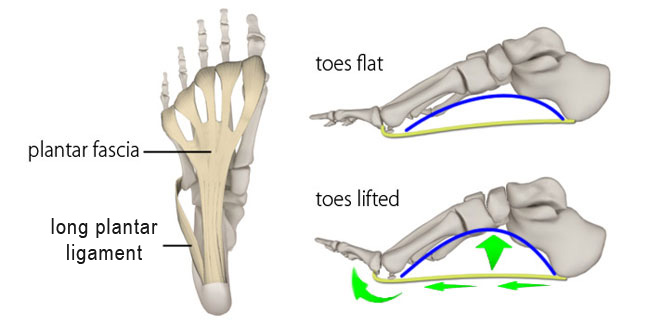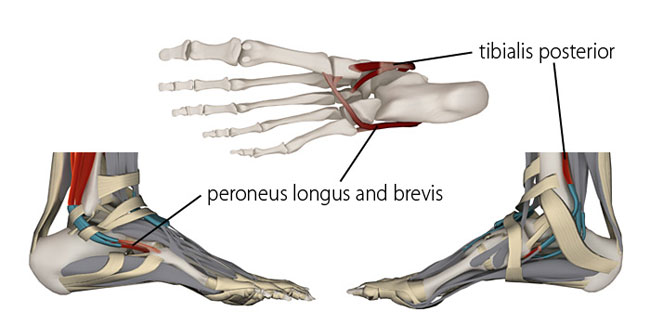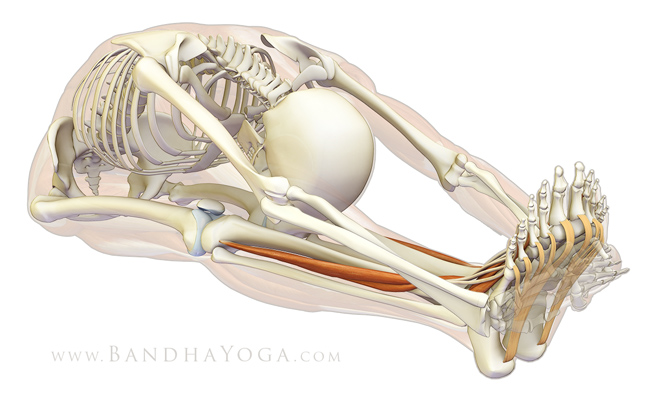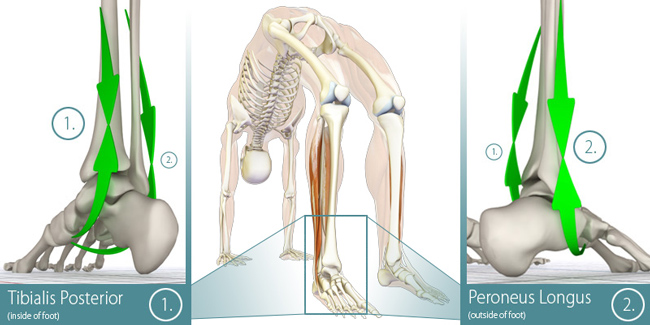
In most fitness and athletic pursuits, the feet are important due to their weight-bearing function (except in swimming and martial arts, where the feet are used to kick). Yoga practice places more importance on the role of the feet. For example, the soles are thought to be a location of minor chakras. Additionally, precision movement of the feet affects parts of the body that are far removed. For this reason, it is important to understand their anatomy and biomechanics.
In this Scientific Key we study the structure of the longitudinal arches of the feet.
First let's look at the anatomy:
1. The bony arches

On the outside of the foot, the talus, calcaneus (heel), cuboid, and lateral metatarsal bones form the lateral longitudinal arch. This is the shallower arch and is the main weight-bearing surface of the foot. Flattening and deepening of the lateral arch occurs through movement between the cuboid and the fourth and fifth metatarsal bones.
On the inside of the foot, the talus, calcaneus, navicular, cuneiform, and medial metatarsal bones form the medial longitudinal arch. This is the deeper arch. Flattening and deepening of this arch occurs through movement between the talus and the navicular bones.
2. The ligamentous arch

The plantar fascia is a fibrous ligament-like structure that runs from the calcaneus to the bases of the toes. Lifting (extending) the toes tightens the plantar fascia and deepens the arches.
3. The muscular dynamizers

The muscles that dynamize the arches are divided into the intrinsic and extrinsic muscles of the foot. The intrinsic muscles originate from and insert onto bones within the foot. The extrinsic muscles originate from the lower leg and insert onto the bones of the foot. In this Key we study the peroneus longus and brevis and the tibialis posterior—three of the extrinsic foot muscles. Contracting the peroneus longus and brevis muscles tilts the foot outward (eversion). Engaging the tibialis posterior muscles tilts the foot inward (inversion). All three muscles can be used to strengthen and deepen the longitudinal arch of the foot.
Now, let's look at these structures in yoga postures.
1. Extending the toes in Paschimottanasana deepens and strengthens the arches.
2. Contracting these muscles lifts the arches in Urdhva Dhanurasana.
The arches can be worked and strengthened in many other poses (especially the standing asanas). Gain awareness of these important structures by gently inverting and everting the feet and flexing and extending the toes in various poses. Always practice carefully and gradually build awareness as you apply your knowledge of anatomy to your practice.
Namasté,
Ray and Chris